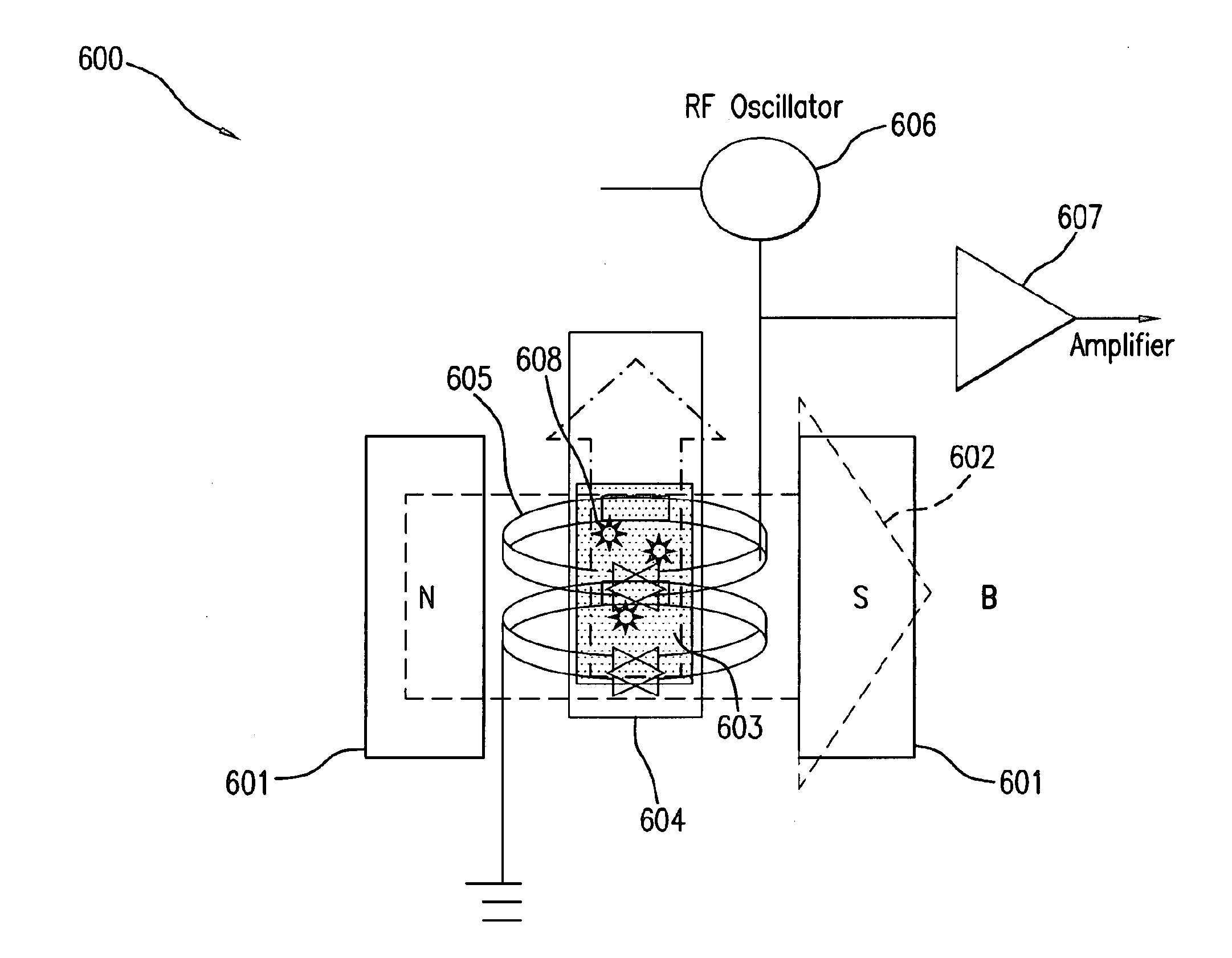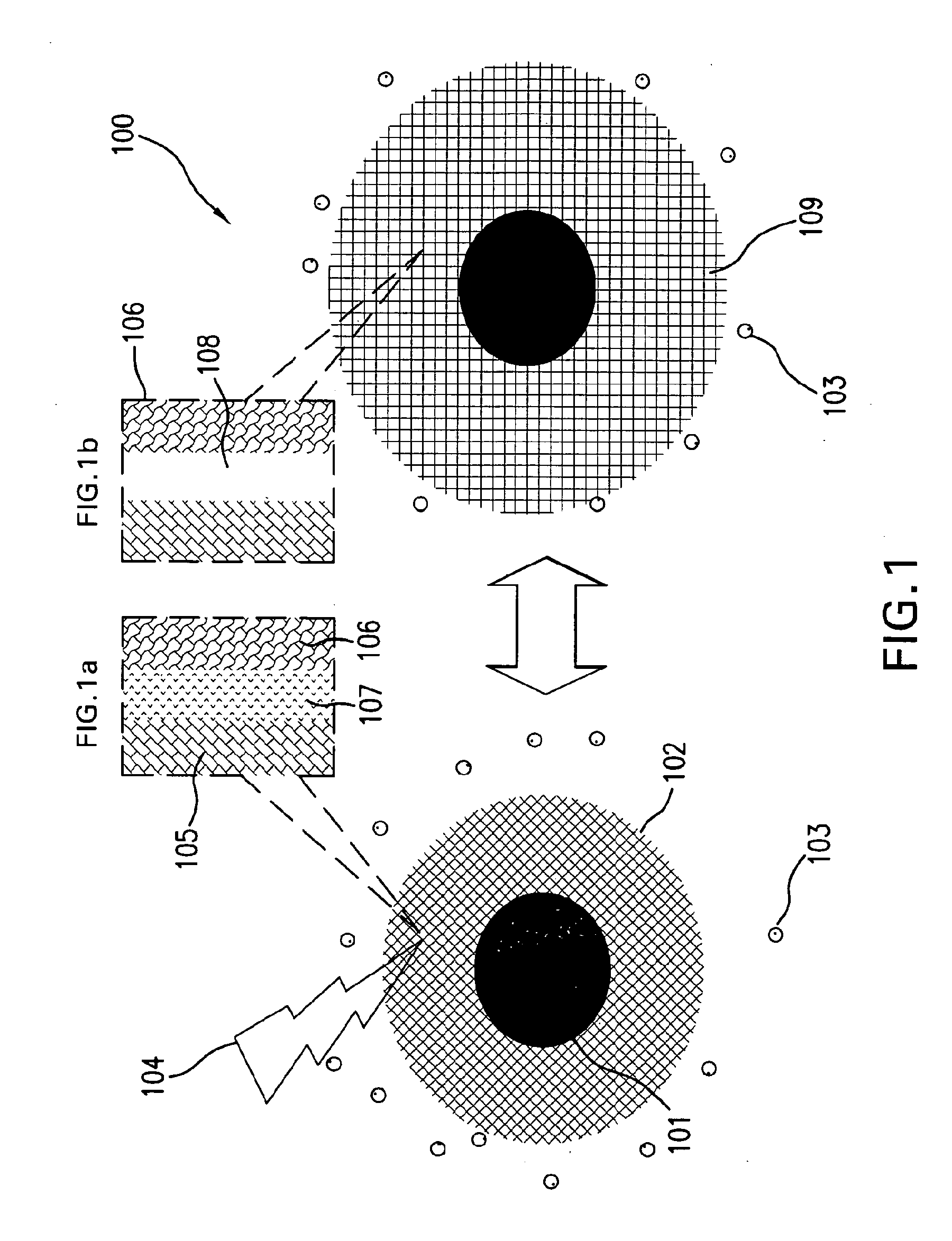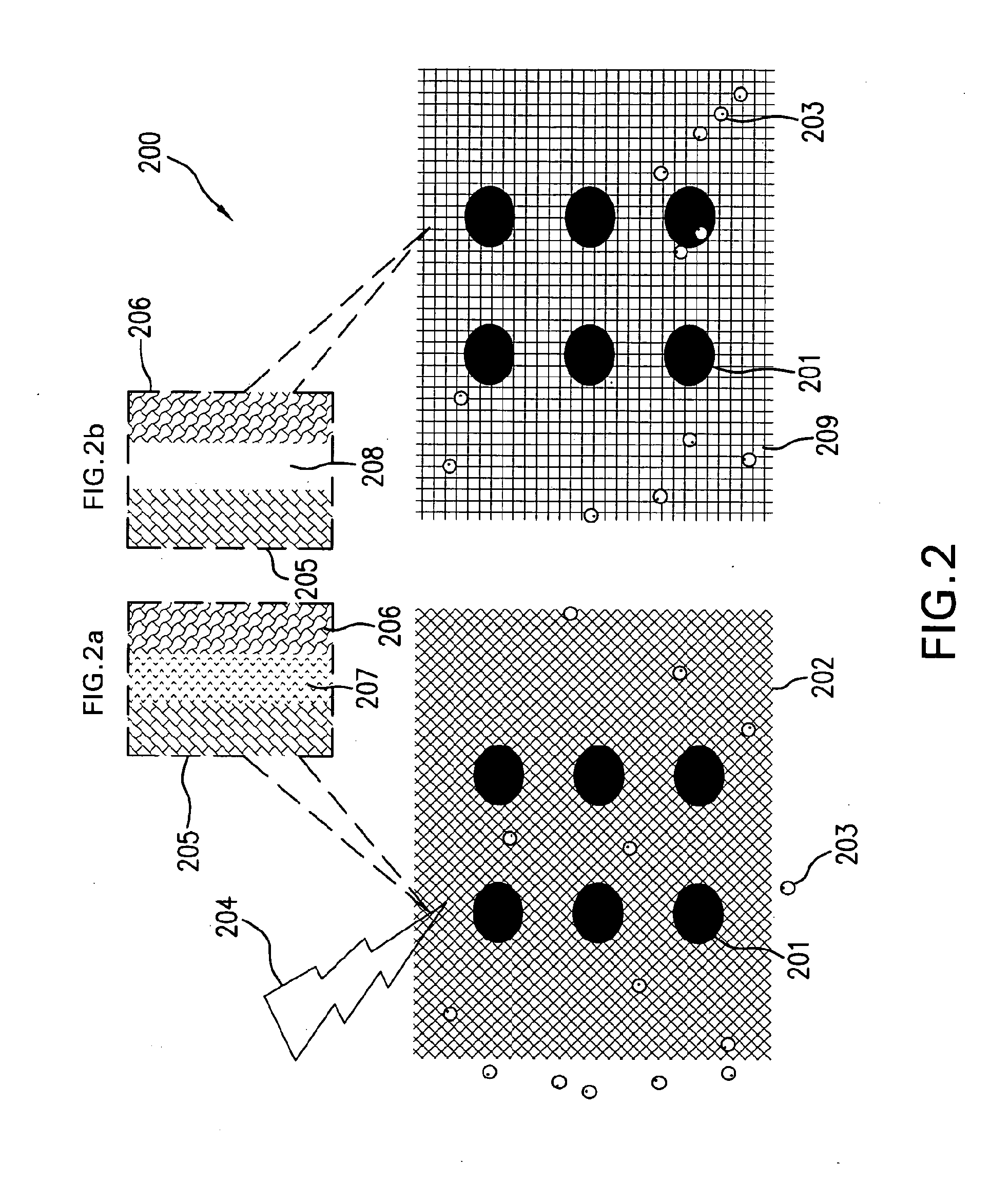Magnetic nanosensor compositions and bioanalytical assays therefor
a magnetic nanosensor and composition technology, applied in the field of nmr-based analyte detection systems, can solve the problems of limiting the dynamic range of certain bioanalytical assays, nanosensor aggregation/disaggregation may not be the optimal method for analyte detection in all assays, and may require long incubation time for cluster formation, so as to achieve rapid and homogeneous reaction, increase sensitivity, and reduce the effect o
- Summary
- Abstract
- Description
- Claims
- Application Information
AI Technical Summary
Benefits of technology
Problems solved by technology
Method used
Image
Examples
Embodiment Construction
[0026]It is contemplated that devices, systems, methods, and processes of the claimed invention encompass variations and adaptations developed using information from the embodiments described herein. Adaptation and / or modification of the devices, systems, methods, and processes described herein may be performed by those of ordinary skill in the relevant art.
[0027]Throughout the description, where devices and systems are described as having, including, or comprising specific components, or where processes and methods are described as having, including, or comprising specific steps, it is contemplated that, additionally, there are devices and systems of the invention that consist essentially of, or consist of, the recited components, and that there are processes and methods according to the invention that consist essentially of, or consist of, the recited processing steps.
[0028]As used herein, an analyte (or target analyte) may include one or more species of one or more of the followi...
PUM
 Login to View More
Login to View More Abstract
Description
Claims
Application Information
 Login to View More
Login to View More - R&D
- Intellectual Property
- Life Sciences
- Materials
- Tech Scout
- Unparalleled Data Quality
- Higher Quality Content
- 60% Fewer Hallucinations
Browse by: Latest US Patents, China's latest patents, Technical Efficacy Thesaurus, Application Domain, Technology Topic, Popular Technical Reports.
© 2025 PatSnap. All rights reserved.Legal|Privacy policy|Modern Slavery Act Transparency Statement|Sitemap|About US| Contact US: help@patsnap.com



